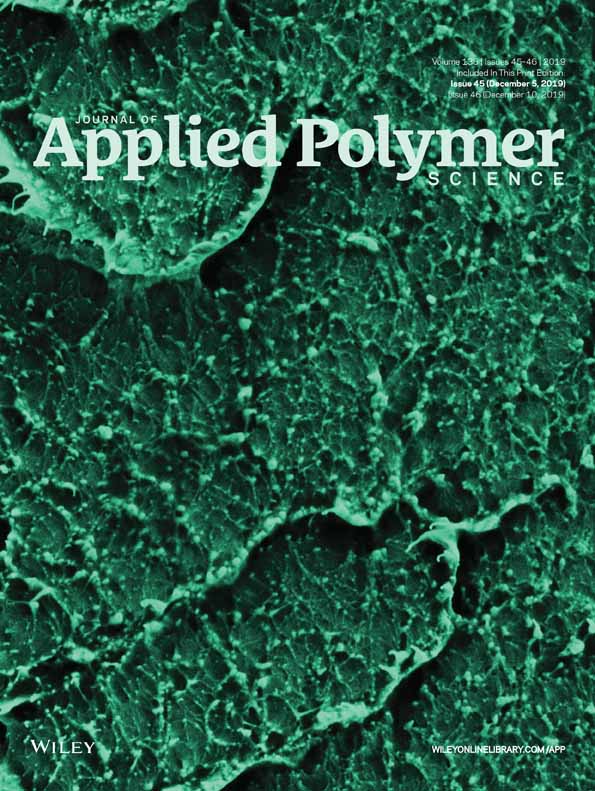Predicting trends in structural and physical properties of a model polymer with embedded natural fibers: Viability of molecular dynamics studies for a bottom up design
ABSTRACT
The effects of relatively high- and low-shear processing on the macroscopic and microscopic porosities of a standard packaging polymer—linear low density polyethylene (LLDPE) and its composites with pine flour are studied. The macroscopic porosities, represented by deviations of observed density from the theoretical density, primarily drive the trends in mechanical and solvent uptake properties. The microscopic porosities of the system, however, are independent of the processing method and pine flour concentration. Furthermore, by using molecular dynamics (MD), molecules of LLDPE and pine flour were constructed. The material properties of the molecules, specifically microporosity and elastic moduli, were compared to experiment. A semiempirical modeling approach was used to fit the simulated data to the experimental composite moduli. The model of Halpin and Tsai was found to be the most efficacious for this system, and the benefits of the combined MD-semiempirical modeling for bottom up design are discussed. © 2019 Wiley Periodicals, Inc. J. Appl. Polym. Sci. 2019, 136, 48189.




